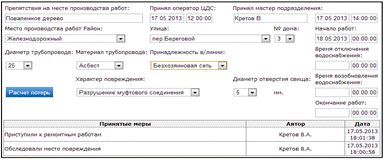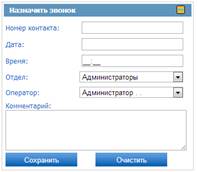Call-centre – I&R System for Housing and Utilities Sector
1. General description of the hardware and software system
In the work of enterprises belonging to the Housing and Utilities Sector remote interaction with the clients takes a special place. The quality of service and the company’s prestige largely depend on the speed and quality of the reaction to the clients’ requests and on the accuracy of delivered information.
Hardware and software system named “I&R System for Housing and Utilities Sector” (IRSHUS) developed by CTISoft, LTD is intended to automate and process of interacting with clients in companies belonging to the Housing and Utilities Sector.
IRSHUS is developed on the basis of VoIP and is used for:
- Building a corporate telephone network of an organization that includes remote offices and uses all types of communication channels (landline, mobile, VoIP(SIP));
- Organizing centralized dispatcher services and hotlines (receiving clients’ calls, on the phone consultancy, etc…);
- Organizing the process of working with clients’ requests (registration of requests, assigning them to specialists, controlling their handling);
- • Informing the population en masse about the company’s services, repairs and preventive measures using telephone lines, e-mail and text messaging.
From the operators’ perspective, the high level of usability in the system is achieved using the “One window” principle.
All actions with the system are carried out using a “thin client” – a web browser – which simplifies its administration.
2. 2. Receiving the clients’ requests
Everyone who calls the I&R service listens to a welcome message. After that the System redirects the call to a call-centre operator according to the rule set up by the System’s administrator.
When the call reaches the operator, a window with the information about the call and the offer either to receive or reject it appears on the screen of the operator’s workstation.
After the operator receives the incoming call, a form automatically opens on the screen, into which all information supplied by the caller should be entered. Some fields of the form (the information about the address, the caller, the debt) is filled in by the System automatically if the number of the caller is found in the database. The description of the caller’s request is supplied by means of asking standard questions offering standard answers, selected by the operator from the reference guide, which speeds up the call processing significantly and allows collecting statistics on request types. The request form also contains fields to set the assignee and the deadline for the task.
While conversing with the caller, the operator fills in the request and saves it in the system. New request automatically receives the “Accepted” status. From this moment the request becomes accessible to all parties involved in the process of processing the request. If necessary the operator can redirect the call to a more experienced colleague by selecting this person from a list of operators ready to receive calls at the moment or to add a qualified expert to the call in the “Conference-call” mode. All conversations between operators and callers are recorded.
If necessary the operator can redirect the call to a more experienced colleague by selecting this person from a list of operators ready to receive calls at the moment or to add a qualified expert to the call in the “Conference-call” mode. All conversations between operators and callers are recorded.
The employee who gets the assignment to process the request receives a notification.
All requests are displayed in the request registry. Depending on the status it is marked in the registry with a corresponding colour.

While processing the request all involved parties can change its status, attach various documents to the request (agreements, scanned copies of receipts, declarations, etc) or add information about the work being done.
3. Informing the callers
Informing the callers can be done both with the help of the operators and with the help of voiceovers recorded in advance in IVR files. In either case the user of the System who has the necessary permissions creates a campaign for mass calling. For this purpose he/she sets the date and the time when the campaign is to be started, selects the necessary message from the prepared in advance IVR files or assigns the group of operators, sets the campaign parameters such as the number of repeated calls, connecting awaiting time, etc.

The phone numbers for mass calling can be imported from an MS Excel file or picked from a client registry. At the assigned time the System without waiting for any actions from the operators starts calling the numbers and, in case of successfully achieving a connection with the client, plays the information message.
While running mass calling campaigns with operators participating, after successfully achieving a connection the System redirects the call to a free operator.
To inform clients, operators can also send messages through email or fax.
To plan sole calls the “Postponed calls” module is used. The System’s user sets the call for the needed date and assigns it to himself or to his subordinates and at the preset time the assignee receives a reminder about the necessity to make a call.
4. Managing the call-centre’s work
The System’s user granted required permissions (a supervisor) can control the work of the call-centre operators.
The supervisor can view the operator queues, call statuses in each queue, add himself to any call between an operator and a caller, switch calls between operators, listen to current conversations and to recorded conversations.
The supervisor has access to complete statistics reflecting all received calls and operators’ work.
5. System administration
The System’s administrator has user interface to manage users’ accounts, edit reference guides, manage the database of serviced objects (domestic and other buildings).
The System allows importing user data from MS Excel files or from customers’ databases.
Also, whenever necessary, data can be synchronized online by integrating the System with the other customer’s software.





